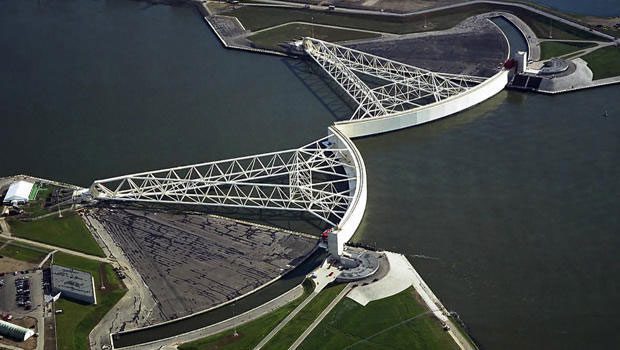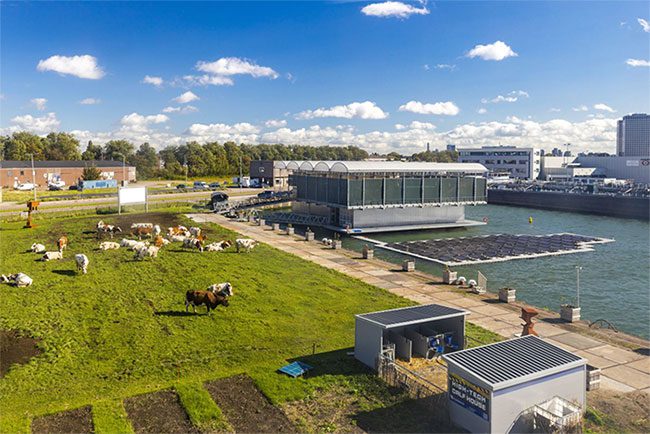Approximately 26% of the Netherlands lies below sea level, and this European country faces a high risk from rising sea levels. Determined not to succumb to difficult circumstances, the Netherlands has developed ambitious infrastructure to cope with this situation.
An example is the Maeslant Storm Surge Barrier located in the southern part of the Netherlands. Constructed from 1991 to 1997, it is part of the Delta Works, a series of structures in southwestern Netherlands designed to protect the country from flooding by the North Sea.

The Maeslant Storm Surge Barrier in the Netherlands was completed in 1997. (Photo: CBS News)
Whenever Rotterdam is threatened by flooding, the Maeslant will automatically close, protecting 1.5 million residents. The gates will close if water is forecasted to rise three meters or more.
This storm surge barrier is designed to last approximately 100 years. It can withstand water levels rising up to 5 meters before major changes are required. Senior advisor Marc Walraven shared: “In fact, we have closed the barrier twice in the past 25 years. We anticipate having to close it more frequently in the future…”
The Maeslant is tested once a year and often attracts crowds of hundreds of curious onlookers.
According to the United Nations, sea levels are currently rising at twice the rate of the 20th century. In October 2021, the Royal Netherlands Meteorological Institute (KNMI) published a report highlighting: “If we do not reduce greenhouse gas emissions, by around 2100, sea levels offshore from the Netherlands could rise by 1.2 meters compared to the beginning of this century.” If the Antarctic ice sheet accelerates its melting, sea levels could even rise by 2 meters by 2100.
In 2014, scientists predicted that sea levels in the Netherlands would rise by 1 meter by the end of this century, but just seven years later, this prediction was updated to 2 meters.
The strategy of building dams, dikes, and storm surge barriers is not the only solution to protect the future of the Netherlands. In Rotterdam, the world’s first floating farm has been established, considered one of many examples of green innovation in the Netherlands. This is the “home” to 40 dairy cows.

The floating farm in Rotterdam (Netherlands). (Photo: rotterdammakeithappen.nl).
The concept of a floating farm was born after Hurricane Sandy struck New York (USA) in 2012, causing a rapid food shortage. Co-founder of the floating farm, Minke van Wingerden explained: “The food supply in the city relies heavily on logistics. And if flooding occurs, there will be no logistics. We came up with the idea that if we build in a climate-adaptive way, meaning moving up and down with the tides, on the water, you will be less dependent on logistics.”
This innovative idea is spreading, with Singapore and Dubai (United Arab Emirates) also aspiring to establish their own floating farms.
According to the Dutch government, the current system helps the country manage rising sea levels until 2050. Improvements are quite slow, and flood prevention structures developed in the last 30 years have allowed the Netherlands to cope with an additional sea level rise of 40 cm.



















































